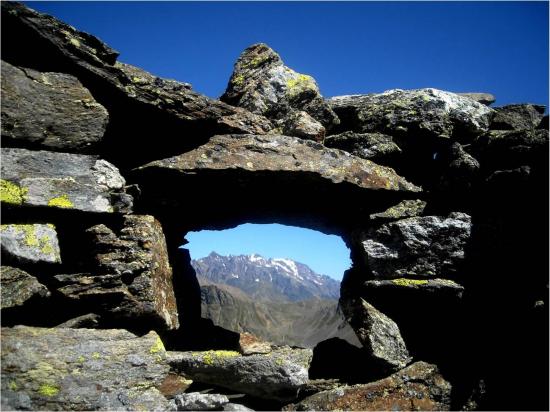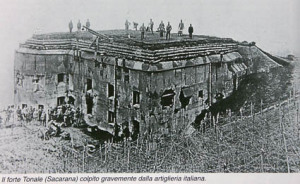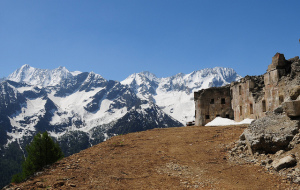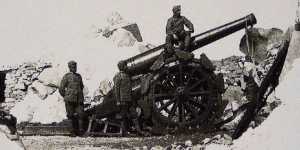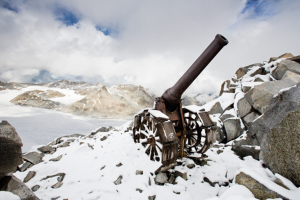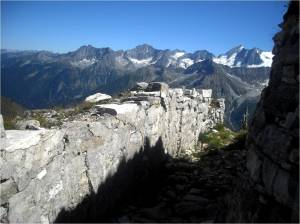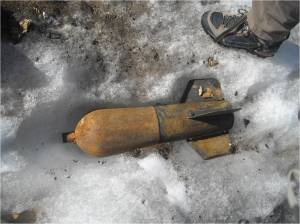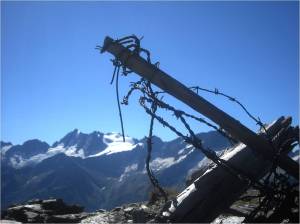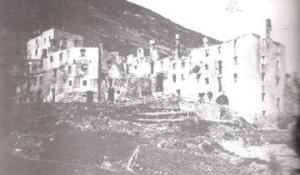Donadei, Nardon, Santagata, Selleri
La Guerra Bianca
Come è ben noto, la Prima Guerra Mondiale, conflitto dalle cause più varie, fu caratterizzato da tragici eventi, propri di uno scontro armato di dimensioni globali, e da conseguenze devastanti, che hanno influenzato il periodo postbellico dei paesi coinvolti.
Un avvenimento di nicchia, contemporaneo alla Grande Guerra, che si distingue dall’immaginario comune di “conflitto”, è stato la Guerra Bianca, così definita perché combattuta sulle cime delle Alpi del Tirolo meridionale. Il conflitto si combatté in modalità differente a seconda dell’area coinvolta e presentò conseguenze variabili. La seguente è la storia di Vermiglio, paese situato a nord del Trentino Alto Adige, al confine con l’Impero Austro-Ungarico durante la I GM. Attualmente conta poco più di due migliaia di abitanti; in passato era abitato da umili pastori e contadini. La forma di commercio prevalente era il baratto, finché nel 1905 in Austria venne dato inizio ai lavori di fortificazione del confine e la moneta fu messa in circolazione.
Per ordine dell’alto comando militare si stavano già allora costruendo i forti pesantemente armati di obici e cannoni in grado di fare fuoco su posizioni oltre valle. I forti erano il Zaccarana, il Pozzi Alti, lo Strino e il Mero, costruiti anche grazie ai vermeani, termine dialettale usato per identificare gli abitanti di Vermiglio, i quali offrirono la loro manodopera in cambio di un ridotto guadagno in monete.
Un esempio: il Forte Zaccarana
L’Impero Austro-Ungarico aveva preceduto le truppe del Regno d’Italia e, oltre alla fortificazione delle linee di confine, aveva anche predisposto che gli irredentisti fossero fatti prigionieri e che fosse creata una fascia di territorio libero sul confine. Queste ultime due disposizioni furono attuate solo successivamente perché la manodopera degli abitanti era utile. Tuttavia, ciò non contribuì ad attenuare il continuo clima di terrore causato dalla possibilità di poter essere arrestati anche solo per il minimo sospetto. Fu così che molti compaesani vennero internati nel campo di concentramento di Katzenau, nei pressi di Linz, mentre gli altri, indipendentemente se anziani o giovani, vennero mandati al fronte.
Gli eserciti erano provvisti solo di cannoni e fucili. Per rendere l’uso dei cannoni il più efficiente possibile, tali armamenti vennero collocati a quota più alta, in modo tale da far compiere al proiettile la traiettoria più lunga. Le modeste fortificazioni cingevano le cime delle montagne. I momenti di scontro a fuoco erano in realtà molto rari. Per la maggioranza del tempo i combattenti lottavano in trincea contro la fame e il clima rigido, proprio dei 3000 metri di quota, altitudine a cui i rifornimenti di cibo venivano spesso tagliati. I morti erano causati molto più spesso dalle condizioni climatiche, più di rado dall’attacco nemico.
A distanza di un secolo, non è più possibile ricorrere a testimonianze dirette, ma le tracce del conflitto sono ancora ben visibili: i solchi causati dalle bombe nei boschi del Passo del Tonale, i resti delle caserme e delle trincee, il filo spinato. E’ possibile ritrovare resti di proiettili di moschetto e bossoli di cannone. Nel 2013 sono stati riportati alla luce due corpi di due combattenti, perfettamente conservati dal ghiaccio con ancora indosso gli equipaggiamenti dell’epoca.
Vermiglio oggi è cambiato, ma conserva ancora la traccia indelebile del suo passato. In seguito al conflitto, le case di chi aveva combattuto erano state ridotte a cumuli di macerie e la loro ricostruzione era avvenuta per mezzo di materiali da costruzione ricavati dalle fortificazioni. Attualmente Vermiglio è caratterizzato da case unite tra loro per mezzo di ponti, con porte d’ingresso situate nei luoghi più incerti, che si affacciano su viottoli strettissimi e ripidi, che si snodano tra l’irregolare pianta del paese e contribuiscono a caratterizzare un luogo storicamente unico.
White War
It’s well known that the World War I has been a very devastating conflict caused by several reasons and characterized by tragical events and consequences, which influenced the years following the War in the countries that got involved.
La Guerra Bianca (White War) was a contemporary event to the WWI, not as much important as the Big War, but certainly relevant. The conflict was fought in different manners, depending on the different towns and it also had vary consequences. The following is the story of Vermiglio, a small town located in the Italian region called Trentino Alto Adige, which was bordered by the Austro-Hungarian Empire during the WWI. Currently the amount of its inhabitants barely gets over a total of two thousands; in the past was inhabited by modest shepherd and farmers. They used to tread by exchanges and barter; they got to know the coin only in 1905, when Austria started its works to fortify its border.
During those years, the people of Vermiglio had already begun building the fortes: Zaccarana, Pozzi Alti, Strino and Mero were built with the help of the vermeani, a dialectal word to identify the people of Vermiglio, who were paid with a low gain in coins.
An example: Forte Zaccarana
he Austro-Hungarian Empire had anticipated the troops of the Italian army by making some arrangements: after fortifying its border, it made the decision of capturing all the irredentists and created a free strip of territory on its border. These last two measurements were carried out only subsequently because the inhabitants’ work was very useful at that point. However, all those arrangements didn’t make the people feel safer anyway. There was a steady climate of terror caused by the possibility of being arrested in anytime. Therefore, a lot of inhabitants were directed to the deportation station in Katzenau, nearby Linz, while others, regardless if elderly citizens or youth, were despatched to the front.
The troops were provided only with cannons and rifles. The actual battles were very rare. The fighters used to struggle against hunger and intolerable low temperature. Also, establishing at 10 thousands ft of altitude, food supplies were often suspended. Casualties were mostly caused by the severe weather conditions.
A hundred years after the war, it is not possible to get direct proves, but the traces of a devastating conflict are still visible: the grooves made by the bombs in the woods of Passo del Tonale, the rests of stations and trances, the barbed wire. It is possible to find the rests of rifle bullets and cartridge cases for cannon. In 2013 two fighters’ dead bodies were found, perfectly undamaged and conserved by the ice in the high glaciers.
Vermiglio is different today, but it still shows the trace of its painful past. After the war, the fighters’ houses were destroyed and their reconstruction was made possible thank to what remained of the fortes. Currently Vermiglio has got featuring houses connected by bridges, with entrance doors located in the most inappropriate positions, facing on narrow and steep streets, that contribute in characterizing an historically unique place.

